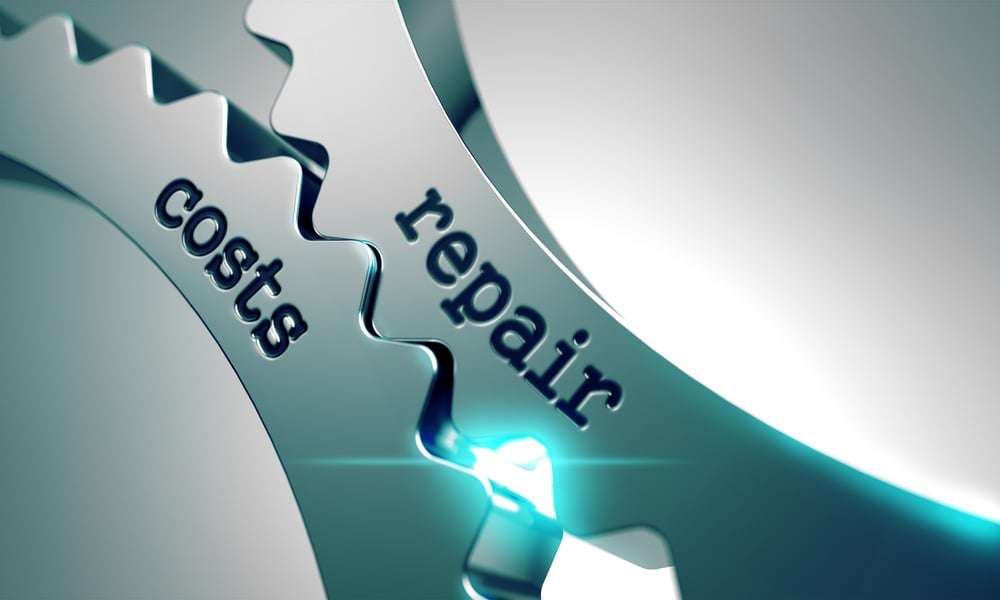Overview of Equipment Financing
Running a small business involves ongoing operational costs and expenses. These include rent, licenses, permits, payroll, inventory, legal fees, and...

Businesses rely heavily on various equipment, technology, machinery, and vehicles to support their operations. However, as these assets age and endure constant use, they are susceptible to decreased efficiency, malfunctioning, and, in some cases, complete breakdown. When your equipment can't keep up, neither can your business. Outdated or inefficient equipment and software can affect workplace productivity and impact your bottom line. So, how do you know if your equipment is hindering your business? This Huddle Business Capital blog article discusses six signs that it's time for new equipment.
Recurring equipment failure, whether a small desktop label printer or a large piece of machinery, can frustrate business owners and their employees and lead to reduced productivity and missed deadlines. Frequent equipment breakdowns that result in significant downtime can negatively affect a company's sales revenues and harm its reputation with customers and clients.
If your business experiences frequent equipment breakdowns, take action to end the cycle of equipment downtime. Consider investing in an equipment evaluation from a certified professional to pinpoint problems and their associated costs. In some cases, proper maintenance and timely upgrades can extend the lifespan of equipment. However, if the evaluation uncovers issues that involve expensive parts and repair services, you might need to upgrade to new equipment to avoid further downtime.
When poorly performing business equipment poses risks to you and your employees, there is an increased risk of workplace injuries. Plus, neglecting equipment safety can lead to severe liability issues, costly lawsuits, and damage to your company's reputation. Therefore, it's crucial to ensure that all equipment is well-maintained and in good working condition.
Regular equipment maintenance is a vital step in preventing injury risks. But that's just the start. It is crucial to foster an environment of open communication with employees, encouraging them to report any odd behavior exhibited by the equipment. This approach can help identify and address safety issues before they become more serious.
Business equipment has specific lifecycles. As computers, forklifts, commercial vans, construction vehicles, and other types of equipment age, wear and tear sets in, and performance starts to decrease. Over time, new equipment makes and models are introduced, some with new features and capabilities, and previous versions become outdated.
Outdated business equipment hampers productivity and puts your company at a competitive disadvantage. It can make it challenging to complete daily tasks and meet production expectations. Plus, outdated equipment is more prone to breaking down, resulting in higher maintenance and repair costs.
Various types of business equipment need to work together. For example, computers, software, and desktop printers need to be compatible with the company's operating system and network. Compatibility issues with these items can lead to errors and poor performance. They can also compromise the security of sensitive information and data.
If your equipment presents problems, it is time to have an information technology (IT) professional check it. Upgrading the operating system and software might resolve some issues. However, outdated computers and hardware that no longer function properly will need to be replaced with newer versions.
Business equipment that frequently requires repairs can put a financial strain on your business. Hiring technicians and paying for repairs and specialized parts can add up quickly. The financial burden is compounded by the loss of productivity during downtime—you and your employees cannot complete much-needed tasks, leading to missed deadlines and unhappy customers and clients.
When evaluating your company's expenses, consider how much and how often you spend on equipment repairs and maintenance. Excessive costs indicate the need to upgrade to new equipment.
Older business equipment tends to consume more energy than newer models. This increased energy consumption can lead to higher utility bills and impact a business's bottom line. The good news? Investing in eco-friendly equipment can help reduce energy consumption.
Modern, energy-efficient equipment is designed to perform the same tasks as its older counterparts but with far less power. This lowers utility bills and results in a smaller carbon footprint—a win-win situation for your business and the environment.
Investing in new or upgraded business equipment can be challenging due to the initial costs. However, the improved efficiency and potential financial gains associated with a new equipment purchase make it a smart move.
If you have obsolete equipment, consider equipment financing to replace it. This option, available at Huddle Business Capital, does not require a sizeable upfront cash outlay. Instead, you receive funds to finance the equipment upgrade and make manageable monthly payments over a set term. The equipment you finance might also qualify for the Section 179 tax deduction.
This Huddle Business Capital blog article is purely educational and contains general information and opinions; it is not intended to provide advice or recommendations of any kind.

Running a small business involves ongoing operational costs and expenses. These include rent, licenses, permits, payroll, inventory, legal fees, and...

As a small business owner, maintaining productivity and a competitive edge are crucial. One aspect that plays a significant role in achieving these...

All types of business equipment—from machinery and vehicles to computer hardware and technology—are susceptible to wear and tear over time. This can...